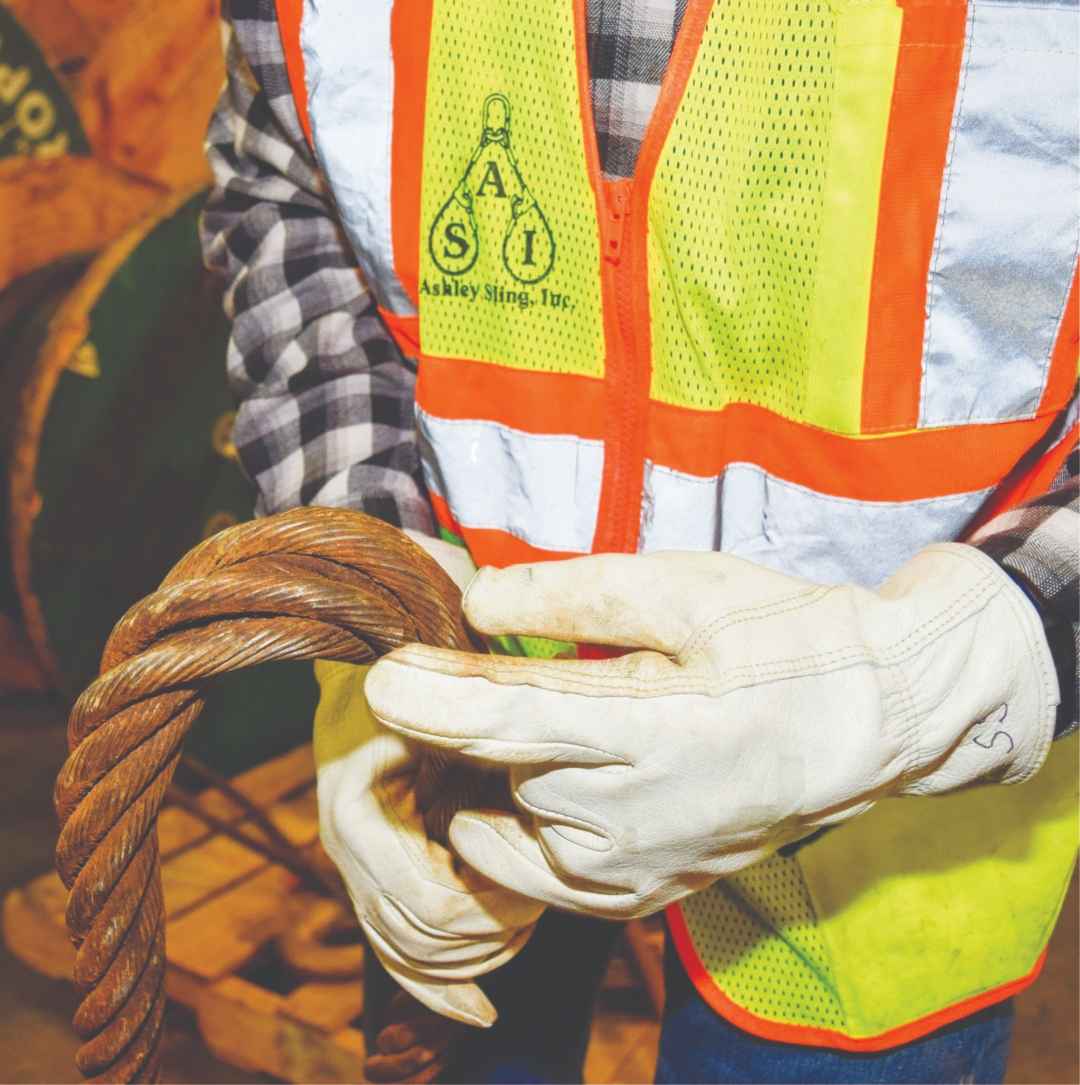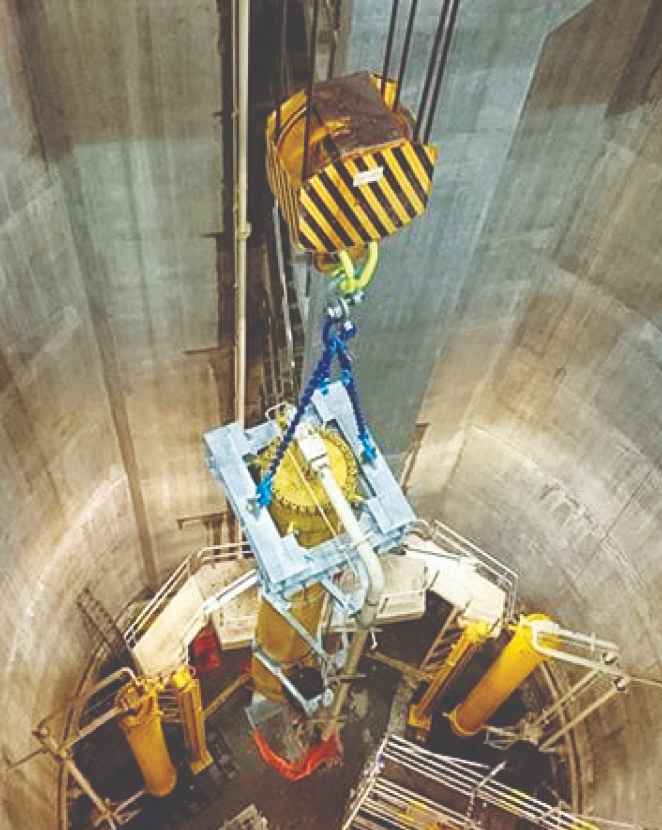Mastering Rigging Safety Through Knowledge and Technique
Ashley Sling provides expert guidance on safe and efficient lifting operations through rigging knowledge, proper equipment use and real-world applications.
As a manufacturer and distributor of below the hook lifting devices and rigging solutions, Ashley Sling, a division of American Equipment Holdings, is focused on providing products and services. Equally important to the company is to serve the industry as an expert source of rigging knowledge.
Among those resources are a “Guide to Rigging and Hoist Basics” and an article on “Mastering Rigging Techniques.” Both documents detail critical equipment, principles and safety practices.
Among them are to begin any lift by determining the weight of the load and the center of gravity to ensure that the rigging equipment can handle the load without exceeding its capacity and that the weight is evenly distributed to maintain balance during lifting. Several factors influence load distribution, including the size, shape and weight of the load, as well as the number and arrangement of lifting points.
Calculating the center of gravity is essential for determining sling angles and understanding rigging angles is crucial role for determining sling tension. The angle formed between the sling and the horizontal plane directly affects the working load limit (WLL) of the sling. As the angle decreases, the tension on the sling increases, leading to a higher effective WLL. Conversely, as the angle increases, the tension decreases, reducing the effective WLL.
To illustrate the importance of proper rigging angles in lifting operations the company provided a real-world example:
When lifting a load with a single vertical sling, the angle formed between the sling and the horizontal plane should ideally be 90 degrees to maximize the effective WLL of the sling. However, if the angle is reduced to 45 degrees, the effective WLL of the sling is halved, increasing the risk of overloading and failure.
Essential Equipment
Slings made from wire rope, synthetic fibers or chain include:
- Wire rope slings offer superior strength and durability for heavy-duty lifting.
- Web and round slings made from materials like nylon or polyester are lightweight and flexible, ideal for lifting delicate or irregularly shaped loads.
- Chain slings made from high-strength alloy steel are durable and resistant to abrasion and high temperatures.
Shackles to connect slings, chains or ropes to lifting equipment come in various types, including screw pin, bolt and snap shackles designed for specific applications.
Hooks used to attach loads to lifting equipment in various shapes and sizes include eye hooks with a closed loop at one end, clevis hooks with a U-shaped clevis and a pin and swivel hooks that allow rotation to prevent twisting of the load.
Hoists used to lift and lower loads include:
- Manual Hoists: Operated by hand, suitable for lighter loads and precise positioning.
- Electric Hoists: Powered by electricity, ideal for frequent and heavy lifting tasks.
- Hydraulic Hoists: Use hydraulic fluid for lifting, providing high lifting capacity and smooth operation.
- Pneumatic Hoists: Powered by compressed air, suitable for environments where electrical sparks are hazardous.
Common Configurations
A vertical hitch attaches a sling directly to the load for lifting equipment in a straight line. It is suitable for lifting loads with a single attachment point and provides a stable and straightforward lifting method.
A choker hitch wraps a sling around the load and passing one end through the other to create a choke. This configuration provides a secure grip on the load but reduces the sling’s lifting capacity due to the increased tension.
A basket hitch passes a sling under the load and attaches both ends to the lifting equipment. This configuration distributes the load evenly and increases the lifting capacity of the sling. It is ideal for lifting long or irregularly shaped loads.
Equipment Inspection
Regular inspection of rigging and hoisting equipment is essential to identify wear, damage or defects. Inspect slings, shackles, hooks and hoists for signs of wear, corrosion, deformation or other issues.
When inspecting slings, look for signs of wear, damage or deterioration, such as cuts, abrasions or broken fibers. Pay close attention to stitching, hardware and attachment points, as these are common failure points.
Maintaining Readiness
Regular training is essential for maintaining proficiency and readiness in rigging operations. By investing in training, organizations can enhance safety and efficiency in rigging operations and minimize the risk of accidents and injuries.
Practical scenarios provide insight into the application of rigging techniques and give riggers a deeper understanding of the principles and strategies involved in safe and efficient lifting operations. Some examples include:
Lifting Irregularly Shaped Loads: Irregularly shaped loads present unique challenges for riggers, as they may be difficult to balance and secure. In such cases, riggers may need to use multiple slings and rigging configurations to distribute the load weight evenly and prevent shifting during lifting. Specialized rigging equipment, such as spreader bars or lifting beams, may also be required to provide additional support and stability.
Navigating Tight Spaces: Working in confined or restricted spaces poses challenges for rigging operations, as there may be limited room to maneuver and position lifting equipment. Rigging configurations may need to be adapted to accommodate tight spaces, such as using shorter slings or adjusting the angle of lift.
Working in Adverse Weather Conditions: High winds, rain or extreme temperatures can pose safety risks for rigging operations. In such situations, riggers must take precautions to ensure that lifting operations can be conducted safely. This may include delaying operations until weather conditions improve, using additional rigging hardware or support structures to enhance stability or implementing special procedures.
Equipment Failure: Rigging equipment, such as slings, hardware and lifting devices, are subjected to immense stress during lifting operations. Failure of any component can endanger workers and property.
Effective communication also critical in rigging operations to help prevent misunderstandings, coordinate movements and alert team members to potential hazards. One common communication protocol in rigging operations is the use of standardized hand signals to convey common messages. In addition, radio communication for coordinating rigging activities allows riggers, crane operators and other personnel to convey detailed instructions and information.
Mastering rigging techniques is essential for ensuring the safety and efficiency of lifting operations. From proper sling configurations to understanding load distribution, rigging angles and effective communication strategies, there are many factors to consider. It is critical to understand and prioritize safety in rigging environments to prevent accidents and improve jobsite efficiency.



